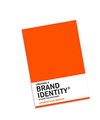Creating a Brand Identity: A Guide for Designers: (graphic Design Books, LOGO Design, Marketing)
amazon.com
Saved by shashaank and
Creating a Brand Identity: A Guide for Designers: (graphic Design Books, LOGO Design, Marketing)

Saved by shashaank and
Find a way to listen to your consumers and stay ahead of trends. Watch for dramatic shifts because they can really open a door for a competitor. It is easier said than done, but do not be afraid to attack yourself even if it means cannibalizing your current business. A good defence starts with a good offence.
A logo, brand mark or brand icon is a deceptively simple device. It employs a combination of shapes, colours, symbols and sometimes letters or words in a simple design that symbolizes the values, quality and promise offered by the manufacturers of a product or service.
You need to be either better, different or cheaper. Challenge yourself to stay relevant, simple and compelling.
Provocative. This may use a thought-provoking question, or irony, for example, VW’s ‘Think Small’.
five key stages: 1. Customer research and visual enquiry 2. Concept development 3. Design development 4. Design implementation 5. Testing
Imperative. Usually a command or direction for action, such as Nike’s ‘Just do it’.
To succeed in branding you must understand the needs and wants of your customers. There are many different ways to create a successful branding strategy, but most design agencies start with research.
Descriptive. This helps to describe the product service or promise, such as Innocent’s ‘Nothing but nothing but fruit’.
If successful, a branding strategy will create the perception in the mind of consumers that there is no other product or service on the market quite the same.